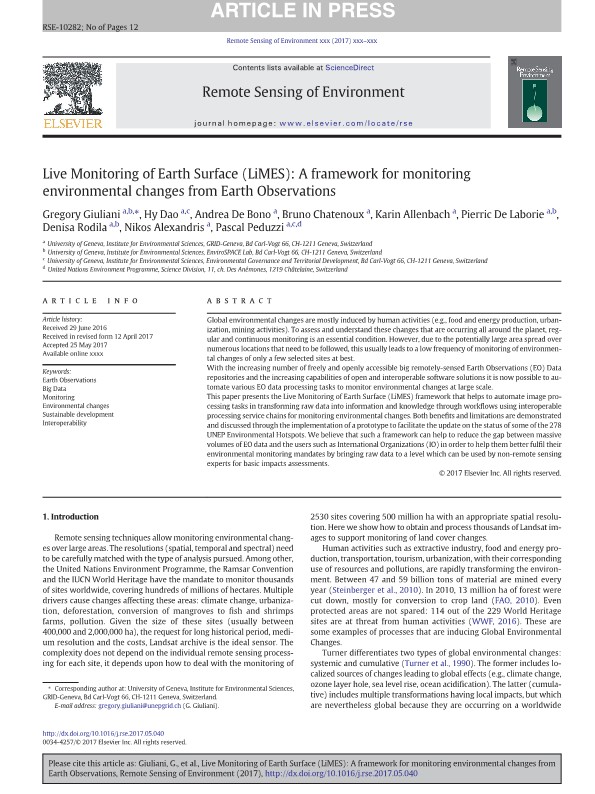Resource
Live Monitoring of Earth Surface (LiMES): a framework for monitoring environmental changes from Earth Observations
Description
Global environmental changes are mostly induced by human activities (e.g., food and energy production, urbanization, mining activities). To assess and understand these changes that are occurring all around the planet, regular and continuous monitoring is an essential condition. However, due to the potentially large area spread over numerous locations that need to be followed, this usually leads to a low frequency of monitoring of environmental changes of only a few selected sites at best. With the increasing number of freely and openly accessible big remotely-sensed Earth Observations (EO) Data repositories and the increasing capabilities of open and interoperable software solutions it is now possible to automate various EO data processing tasks to monitor environmental changes at large scale. This paper presents the Live Monitoring of Earth Surface (LiMES) framework that helps to automate image processing tasks in transforming raw data into information and knowledge through workflows using interoperable processing service chains for monitoring environmental changes. Both benefits and limitations are demonstrated and discussed through the implementation of a prototype to facilitate the update on the status of some of the 278 UNEP Environmental Hotspots. We believe that such a framework can help to reduce the gap between massive volumes of EO data and the users such as International Organizations (IO) in order to help them better fulfil their environmental monitoring mandates by bringing raw data to a level which can be used by non-remote sensing experts for basic impacts assessments.